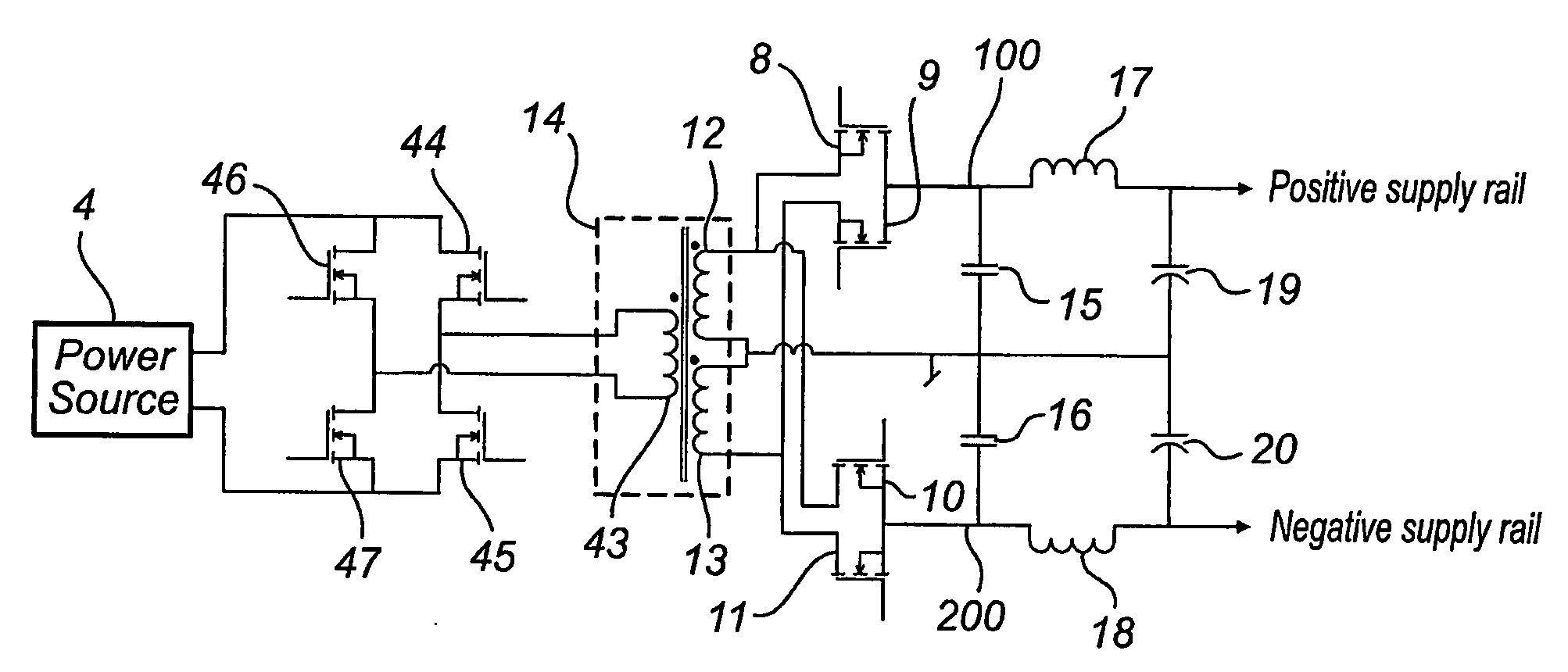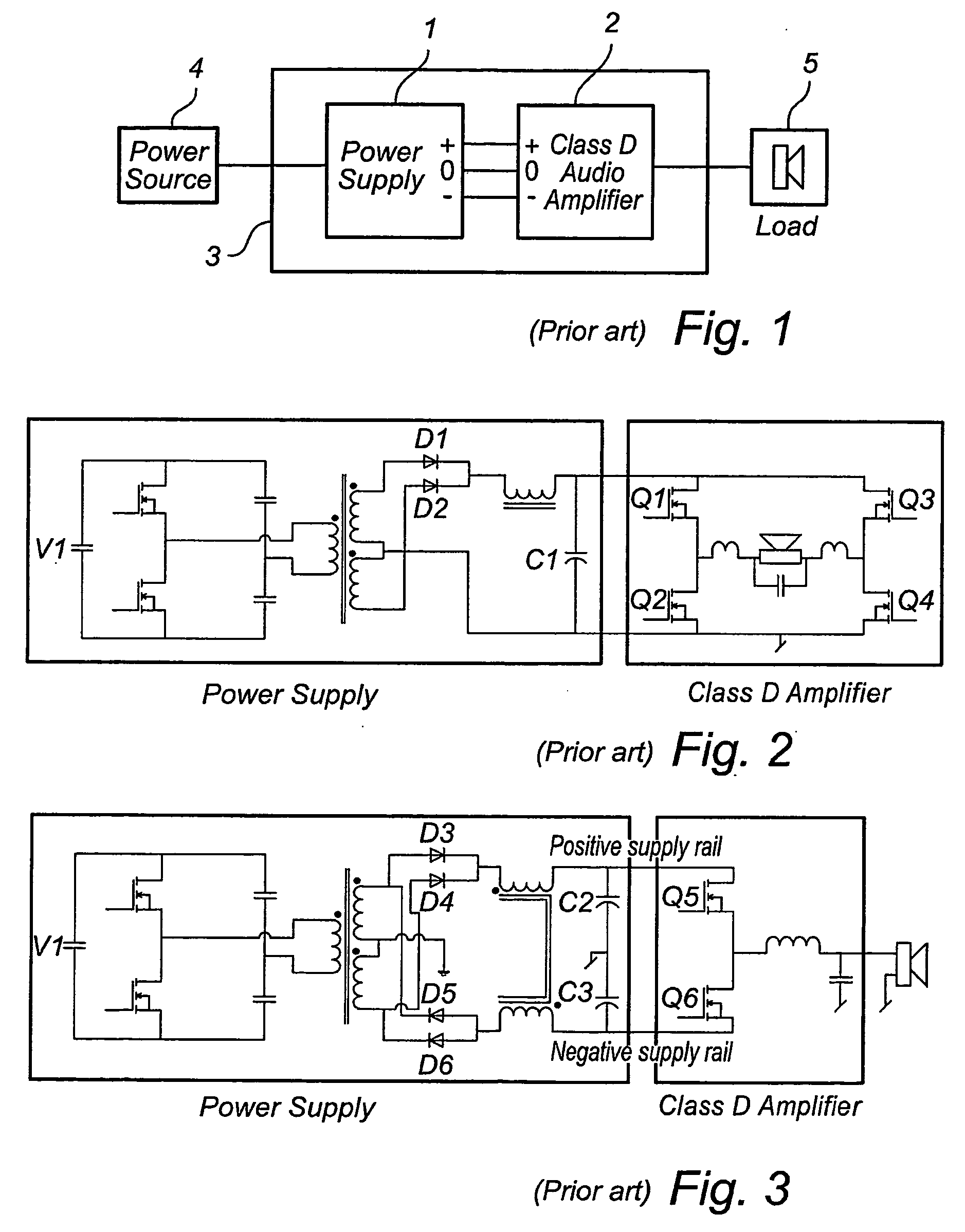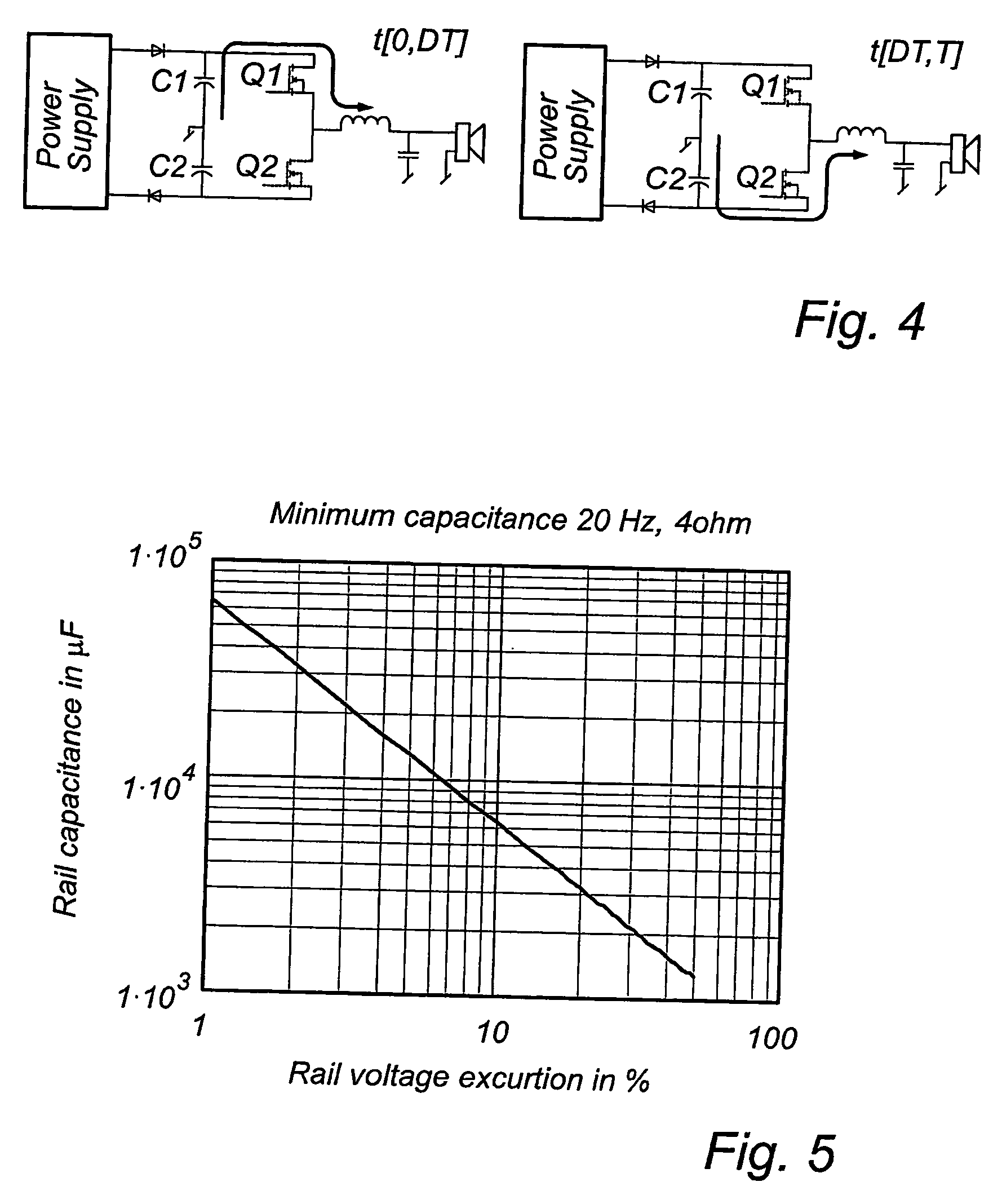Audio Power Conversion System
a power conversion and audio technology, applied in the direction of ac-dc conversion, amplifiers, electric variable regulation, etc., can solve the problems of increasing distortion, needing a dual rail supply, and affecting the performance of the amplifier
- Summary
- Abstract
- Description
- Claims
- Application Information
AI Technical Summary
Benefits of technology
Problems solved by technology
Method used
Image
Examples
Embodiment Construction
[0060]A block schematic of an audio power conversion system is shown in FIG. 1. The power supply (1) can be a switched mode supply or a linear type. Depending on the type of amplifier the supply is sourcing the output will be either a single rail or a dual rail supply. The class D amplifier (2) will typically be a half-bridge (single-ended) or a full-bridge topology. The number of channels in (2) can vary from 1 to multiple channels. The load (3) is typically an electro dynamic loudspeaker but can be any kind of transducer transforming the electrical signal from the amplifier to an acoustic signal. The power source (4) can be an AC-source, e.g. the utility net, or it could be a battery (e.g. automotive, portable equipment). The output of the power source (4) is a DC-voltage (or almost) which means that in case of an AC-source input, means to rectify and stabilize the voltage is included in (4). The electrical part of the audio power conversion system is defined as (3).
[0061]Given th...
PUM
 Login to View More
Login to View More Abstract
Description
Claims
Application Information
 Login to View More
Login to View More - R&D
- Intellectual Property
- Life Sciences
- Materials
- Tech Scout
- Unparalleled Data Quality
- Higher Quality Content
- 60% Fewer Hallucinations
Browse by: Latest US Patents, China's latest patents, Technical Efficacy Thesaurus, Application Domain, Technology Topic, Popular Technical Reports.
© 2025 PatSnap. All rights reserved.Legal|Privacy policy|Modern Slavery Act Transparency Statement|Sitemap|About US| Contact US: help@patsnap.com



